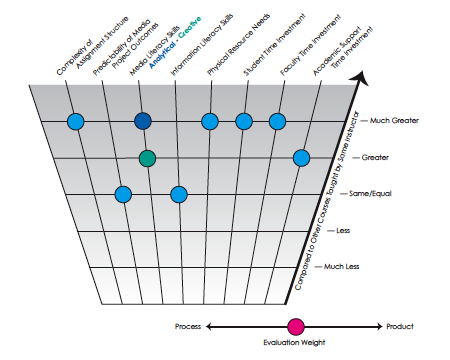Case Study: The Marrow of African-American Literature
AFRST/CPLIT 255. Professor Vincent Odamtten, Hamilton College
Please provide the course description as it appears in the catalog and the typical enrollment for the course.
Exploration of how African-Americans, in the face of enslavement, exclusion, and terror, produced literature expressing their identities and aspirations. In examining themes such as abduction, separation and resistance, students will assess the inscription of self on the emergent national culture by writers such as Olaudah Equiano, Phillis Wheatley, Frederick Douglass, Harriet Wilson, Frances Harper, Sutton Griggs, and Charles Chesnutt. Traditional written assignments, critical discussion, and digital media coursework in the computer lab are required (1700-1900). Prerequisite, a 100-level English course or equivalent, or consent of instructor. Open to sophomores and juniors only.
Prior to requiring the digital media component for this course, my typical enrollment was between 25-30 students. After requiring the digital media assignments the class size has dropped to 8.
What are the learning goals of the media assignment(s) in the course. If your course assignments contain both analysis and creative production components, describe the learning goals of each.
Both the media assignments and the traditional literary analysis are to encourage the students to more completely and critically engage with the texts. I want them to explore issues of racial, gender and class identities, particularly of African Americans, as slaves and freedmen and women. Hopefully, they will also begin to question the representation of Euro-Americans in the context of America's national identity in the 19th century and beyond. In other words, the assignments demand an investigation of what Stuart Hall and others call the "circuit of culture" (see du Gay, Hall et all, 1997). Such a "circuit" includes the following -- representation-identity-production-consumption-regulation -- a circuit in which all points are interdependent and determining through the medium of language, that is a representational system. This applies in equal measure to what we often separate as text and image.
What are the relationships of the media assignment(s) to the other aspects of the course?
Generally, it seems that the students come to the course with an understanding that the critical essay assignments are especially analytical, objective and not necessarily reflective of who they are as interpellated subjects. However, they assume that the media assignments are creative, subjective and demand some kind of emotional investment or risk. One of the objectives of the course is to disabuse the students of such notions. By the end of the course, students should recognize that such binary separations are arbitrary, artificial and temporary.The assignments should demonstrate that such boundaries are tactical and that the relationships are strategic to their learning.
Describe your assignment design/structure.
Having read the section, chapter or whole book(s), students discuss what they have read, often with a written first response(s) to the work(s) which they keep as a touch-stone or stones for comparative purposes. Post discussion, students are to write 1-2 page narrative on some aspect of the text(s) that especially resonated with them -- intellectually, emotionally, or for any other reason(s). This assignment is also up for further discussion and feedback. After this they are to write a narrative realating what they have read and discussed to the thematic concerns of the course, illustrated with passages from the original text(s) and their own lives. This will be the narrative basis for their multimodal project (part one). This narrative is subject to further revision. Students are then required to gather "images" -- pictures, newspaper headlines, flyers of slave auctions etc -- that illustrate their narrative. Then they are asked to gather musical "texts" that they think illustrate their narrative or parts of it.
To what extent does your assignment design address issues of visual/aural literacy?
The assignment design is driven by visual and aural literacy considerations. The students must begin to make thoughtful choices about the images and sounds that they wish to include. As they repeat and edit, they become more critical and discerning about their choices.
To what extent does your assignment design address issues of information literacy?
In the Fall semester, information literacy was not directly addressed, since a Librarian and I guided students to especially reliable sources, and I vetted what students gathered on their own, before allowing them to incorporate material into their projects.
To what extent does your assignment design address issues of technology skills?
As with the Information literacy issue, there was a significant amount of collaboration between Janet Simons and my students, and then more between myself and the students. Individual technical skills were generally low, with the exception of one or two students; however, both students had to learn to be more critical in the production of their projects.
What are the resources necessary for your assignment (content/materials, institutional support, equipment)?
The major resource needed if that of regular computer lab time, having that expectation built into the course would be a great improvement.
Describe how you evaluated the project outcomes? Did you evaluate process? Outcomes? Both?
Both.
Estimate the time invested in the project by you, your students, and academic support staff.
Countless, by all involved.
How many times have you taught this course/assignment? What would you do differently next time?
Once. Include the computer lab time.
What is your level of expertise with respect to media technologies and scholarship?
Intermediate.
An instructor created model, instructor comments and students projects can be found here.
